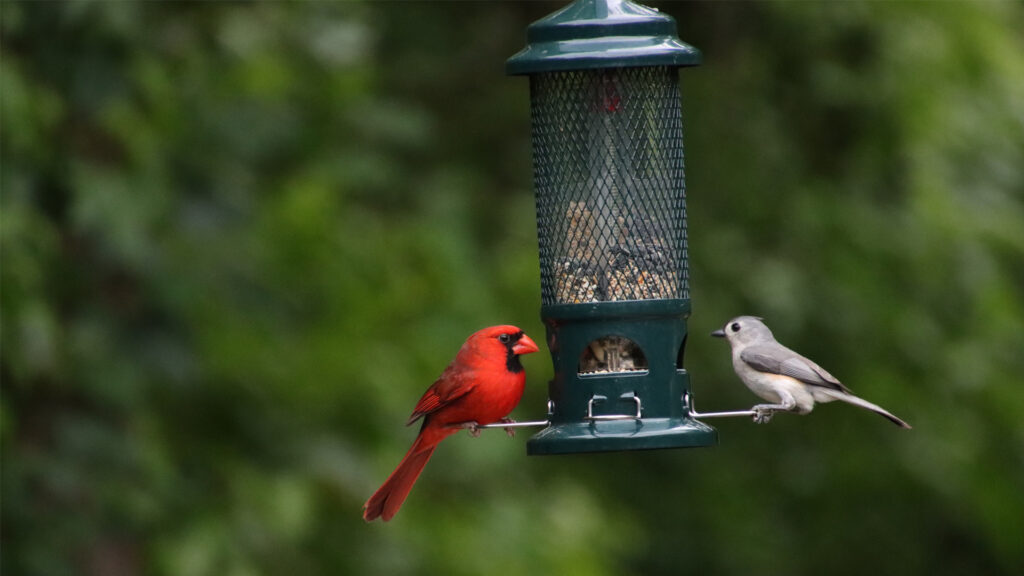By Susan Nugent, Climate Reality Project member
Record-high temperatures strike around the globe as summer heats up. We talk about staying hydrated and planning ways to avoid the sun. But what about the birds?
Many birds, including blue jays, chickadees, brown thrashers, red-bellied woodpeckers and cardinals, still arrive at my feeders first thing every morning, eating worms, helping themselves to grapes and emptying seeds from containers. How are birds affected by increased temperatures? And what can we do to help them?
Climate change profoundly affects our birds. Audubon reports that two-thirds of U.S. bird species are at risk of extinction because of climate change. The changing climate results in traditional habitats no longer providing sufficient resources for bird populations. Migrating birds, for example, may arrive at a formerly used site to find that the expected habitat is not available.

Temperatures may be incompatible with nesting needs: Water may have dried up, fruiting plants may no longer provide a food source or bugs are not yet swarming when the birds arrive. Humans receive warnings of storms or droughts. Birds rely upon day length, magnetic fields and other factors to make their journeys. But no longer are the migration routes predictably welcoming to the true snowbirds.
Audubon’s predictive maps show how habitat change will require many species relocating to different territory, changing their normal range, in order to find the resources necessary to survive. Audubon observes, “By stabilizing carbon emissions and holding warming to 1.5°C above pre-industrial levels, 76 percent of vulnerable species will be better off, and nearly 150 species would no longer be vulnerable to extinction from climate change.”
In order to reduce carbon emissions, alternative energy sources must prevail, despite potential problems. Some naysayers have fought against both wind turbines and solar power. However, research shows that the placement of wind turbines, avoiding migration patterns and certain wind currents, can greatly reduce impact upon bird populations. Painting the turbine rotor blades black also has helped birds.
Solar panels on roofs help tremendously, but odd resistance to solar fields exists. More and more solar fields are doubling as wildlife habitats with water, tall grasses, bushes and shade part of the plan.
Birds dealing with excess heat look as if they are panting. Recommendations for helping our birds include providing water in yards for birds to rehydrate. That water needs to be kept as cool as possible, in shady areas and out of the sunlight.

Shade is a key to helping our winged friends. Planting in layers, with tall trees, smaller trees, bushes and grasses, all providing places for birds to stay out of the heat of the day, enlarges and improves the bird habitat.
Also, native plants provide more sustenance than non-natives. They host far more insects, providing diversity of diet for many different species. The native plants will adapt better to the changing climate. So the gardener will also benefit from adding more natives to the garden.
As we cut our carbon dependence, we also help all our backyard birds. The lower we can keep our temperatures and the fewer emissions we have, the less habitat we destroy. Those previously mentioned Audubon maps demonstrate how a 1.5-degree increase will have much less impact than a 2- or 3-degree increase.
Susan Nugent is a Climate Reality Project leader from Gainesville.
If you are interested in submitting an opinion piece to The Invading Sea, email Editor Nathan Crabbe at ncrabbe@fau.edu. Sign up for The Invading Sea newsletter by visiting here.



